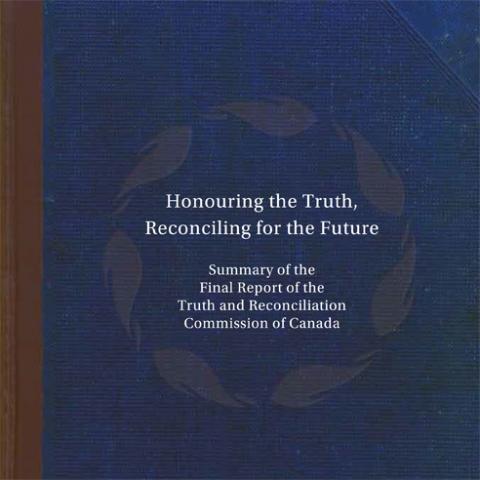
The Truth and Reconciliation Commission of Canada’s Calls to Action, published in 2015, highlighted Canadian educators’ moral and ethical responsibilities to contribute to the advancement of reconciliation between Canadians and Indigenous peoples. However, as H&PE educators in Ontario’s schools look to respond by providing culturally relevant Indigenous education in their classrooms, they are finding almost no context-specific, refereed information upon which to build such meaningful and inclusive programs.
The findings of a recent scoping review1 conducted by Dr. Jenna R. Lorusso, Ophea, and Cree scholar Dr. Janice M. Forsyth helps to explain why.
This review involved a systematic search for English-language peer-reviewed research published since 2000. The topics searched for included Indigenous children and youth and Indigenous traditions, cultures, and perspectives in Ontario H&PE and school-based physical activity and health programming. The search returned a mere seven relevant articles.
The dearth of articles is striking considering: (a) Ontario has the largest Indigenous population in Canada, with 374,395 peoples self-identifying in the 2016 Census (Ontario Ministry of Indigenous Affairs, 2020), and (b) the Ontario First Nation, Métis, and Inuit Education Policy Framework, published in 2007, mandates the evidence-informed support of Indigenous students and Indigenous traditions, cultures, and perspectives in all Ontario classrooms, including H&PE classrooms.
This begs the question, what context-specific, evidence-based information is needed to inform Ontario teachers’ support of Indigenous students and Indigenous content in H&PE and school-based physical activity and health programming? The findings of this scoping review highlight four important priorities for future research:
- Research focused on the H&PE context, and written for H&PE teachers, is needed. All but one of the seven articles collected in this review was written for an audience of health and nutrition professionals, not health and physical education educators. Not surprisingly then, the focus was on health, not education, and the role of the H&PE subject area and teacher was rarely addressed. H&PE-specific information that is accessible to H&PE teachers is needed.
- A focus on Indigenous traditions, cultures, and perspectives is needed. The majority of the articles collected in this review focused on the physical health needs of Indigenous children and youth, and not on the support of Indigenous content within H&PE and other movement-based school settings. While a focus on the health of Indigenous children and youth is an important focus that must continue, we must not forget that an important part of reconciliation is ensuring all students have knowledge and appreciation of contemporary and traditional Indigenous traditions, cultures, and perspectives; information about how H&PE teachers can support that goal is critical.
- A focus on a diversity of Ontario-based Indigenous communities in a diversity of locations is needed. The articles collected in this review were focused on three First Nations communities located in remote regions of Northern Ontario. While a focus on remote Northern communities is important and must continue, it must also be appreciated that there are 133 different First Nations communities located in Ontario, and there are many Ontario cities with considerable Indigenous populations, with Thunder Bay being the Census Metropolitan Area with the highest proportion of Indigenous people in Canada (i.e., 12.7% of population; Ontario Ministry of Indigenous Affairs, 2020). The needs of Indigenous children and youth differ by their community identification and location (among other factors), as do the needs of H&PE teachers; thus, a diversity of context-specific information is needed.
- A focus on secondary school contexts is needed. The articles collected in this review were primarily focused on the elementary school context. While a focus on the important foundational stage of the elementary years must continue, research on the secondary years is also needed for many reasons including that: (a) Ontario secondary school completion rates for Indigenous peoples (i.e., 75%, and 45% for those living on-reserve) are below that of non-Indigenous peoples (i.e., 93%; Ontario Ministry of Indigenous Affairs, 2020); and (b) in Ontario, H&PE is taught primarily by generalist teachers at the elementary level and specialists only at the secondary level.
Clearly much work remains to be done and in light of the myriad of challenges Indigenous children and youth face in schools as a result of colonization, this work is urgent. In response, Ophea is working – in consultation with Ontario-based Indigenous communities – to spur research on these four priority areas so H&PE teachers can better inform their delivery of Indigenous education. While November is the month that many school boards in Ontario observe as Indigenous Education month, we encourage all H&PE educators to reflect and speak out in their own way each month about the information and resources needed to better support Indigenous students and Indigenous content in their classrooms.
References
1A manuscript reporting on this study is currently under review at PHEnex, the peer-reviewed journal of the Physical and Health Education Canada Research Council (https://ojs.acadiau.ca/index.php/phenex)
Ontario Ministry of Education. (2007). Ontario First Nation, Métis, and Inuit Education policy framework. Toronto, ON: Aboriginal Education Office.
Ontario Ministry of Indigenous Affairs. (2020). Indigenous peoples in Ontario. https://www.ontario.ca/document/spirit-reconciliation-ministry-indigenous-relations-and-reconciliation-first-10-years/indigenous-peoples-ontario
Truth and Reconciliation Commission of Canada. (2015). Calls to action. Winnipeg: Truth and Reconciliation Commission of Canada.
